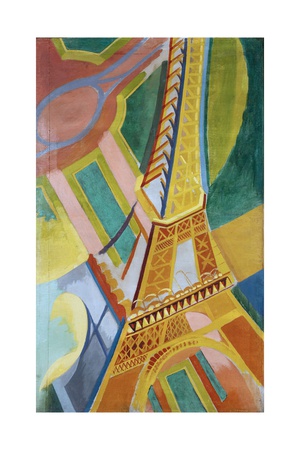Cubism and its Influence on Art Deco Design
Some links from this site lead to third parties who pay us a commission if you buy something. This allows us to keep providing the information on this site free of charge!
Although Cubism as a movement didn't last very long, virtually ending at the outbreak of WWI, it had a lasting influence on the Decorative Arts from fashion to interior design throughout the 1920s and 1930s.
The seeds of Cubism were sown by the Cézanne exhibition in Paris in 1907 and Picasso's Demoiselles d'Avignon (also 1907) which was inspired by African masks.
Cézanne believed nature could be reduced to sculptural forms such as cylinders, spheres and cones and had developed a flat, two dimensional view of the landscape.
 Cezanne - La Montagne de St Victoire
Cezanne - La Montagne de St VictoireThe old rules of adhering to perspective had gone by the wayside. Time, space and movement were more important and artists wished to represent many different viewpoints of the same object at the same time.
This led to the two dimensional geometric style associated with the Cubists and filtered into the design of Art Deco posters, fashion, jewelry, interior design and architecture.
The Cubist Movement
The small group of artists which banded together in Montmartre, Paris and formed the Cubist movement were led by Georges Braque, Pablo Picasso and Juan Gris.
Fernard Léger, Robert Delaunay, Albert Gleizes and Jean
Metzinger were dubbed the "Salon Cubists" as they exhibited at the
tolerant Salon d'Automne and Salon des Indépendants.
 Juan Gris - Guitar and Newspaper 1925
Juan Gris - Guitar and Newspaper 1925The brothers Raymond and Marcel Duchamp and Jacques Villon formed another group in the arrondisment of Puteaux, and linked the Cubists to the changes happening in the technological world of the Machine Age.
Marcel Duchamp later became one the the leaders of the anarchic Dadaist movement and stopped painting to create his world famous "ready mades" - everyday objects renamed to undermine the very notion of "artistic" invention.
 Marcel Duchamp - Mari-E, 1912
Marcel Duchamp - Mari-E, 1912Several of the Cubist artists, Picasso, Braque, Robert and Sonia Delaunay among others crossed over to the world of theatre and designed sets for the Ballet Russes, which were enormously influencial in the world of Art Deco fashion and jewellery.
 Robert Delaunay - Tour Eiffel
Robert Delaunay - Tour EiffelTheir geometric shapes and forms were taken up by designers of
everything: from functional homewares to decorative objects, from
furniture to architecture. There was huge boom in advertising in the
1920s and 1930s and the design of everything from magazine ads to
posters also reflected the influence of the flat, two dimensional and
geometric forms of Cubism.
Check out the cubist prints on sale at Etsy.
Decolish Home > Art Deco Artists > Cubism
Etsy has a surprisingly good range of Art Deco furniture, interior decor, art and prints, 1920s and 1930s fashion, accessories, jewellery and Bakelite. Click the banner to explore.
Join our Facebook Page so you never miss a thing!
Like this Page
- Decolish Home
- Cubism


